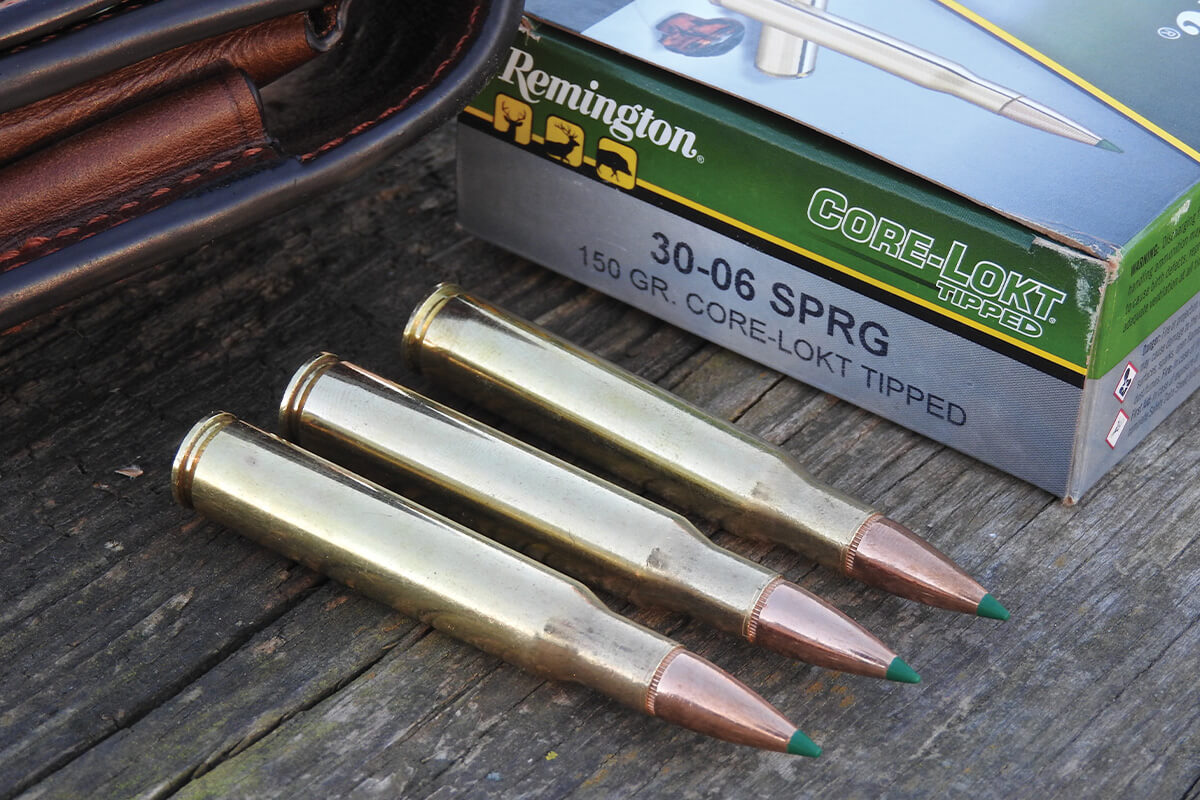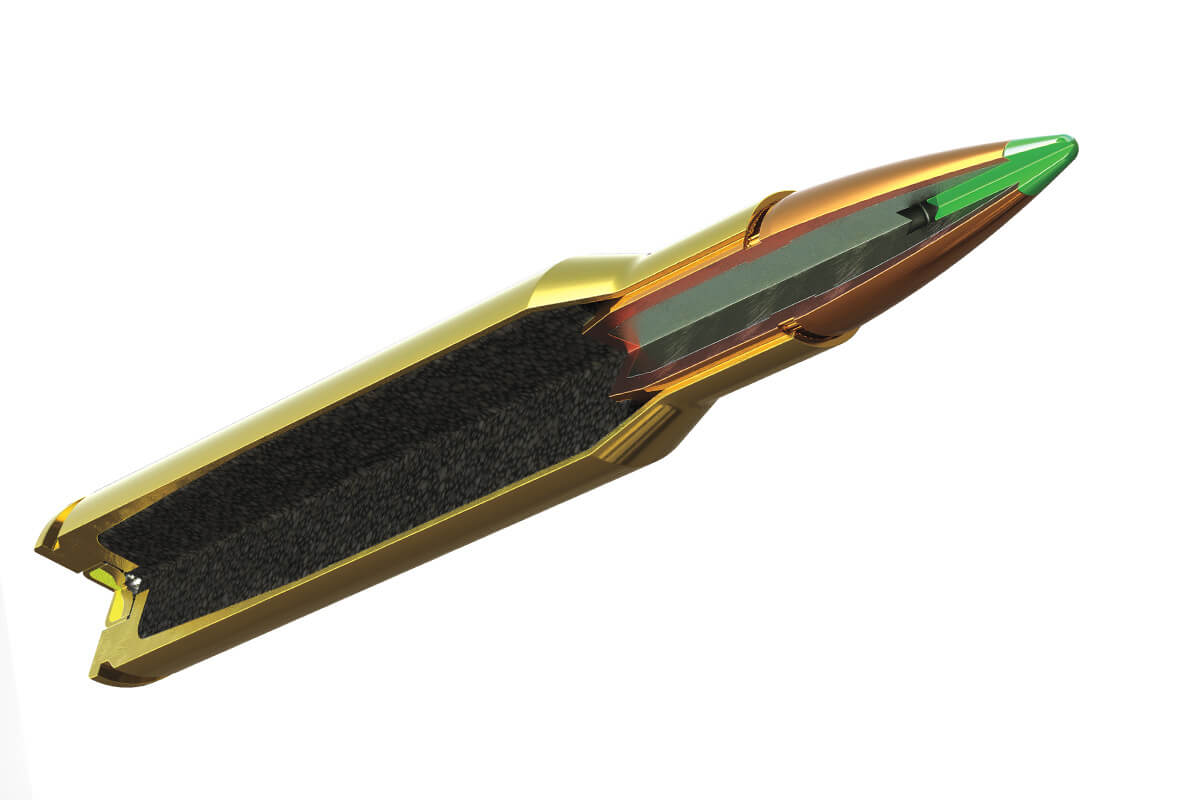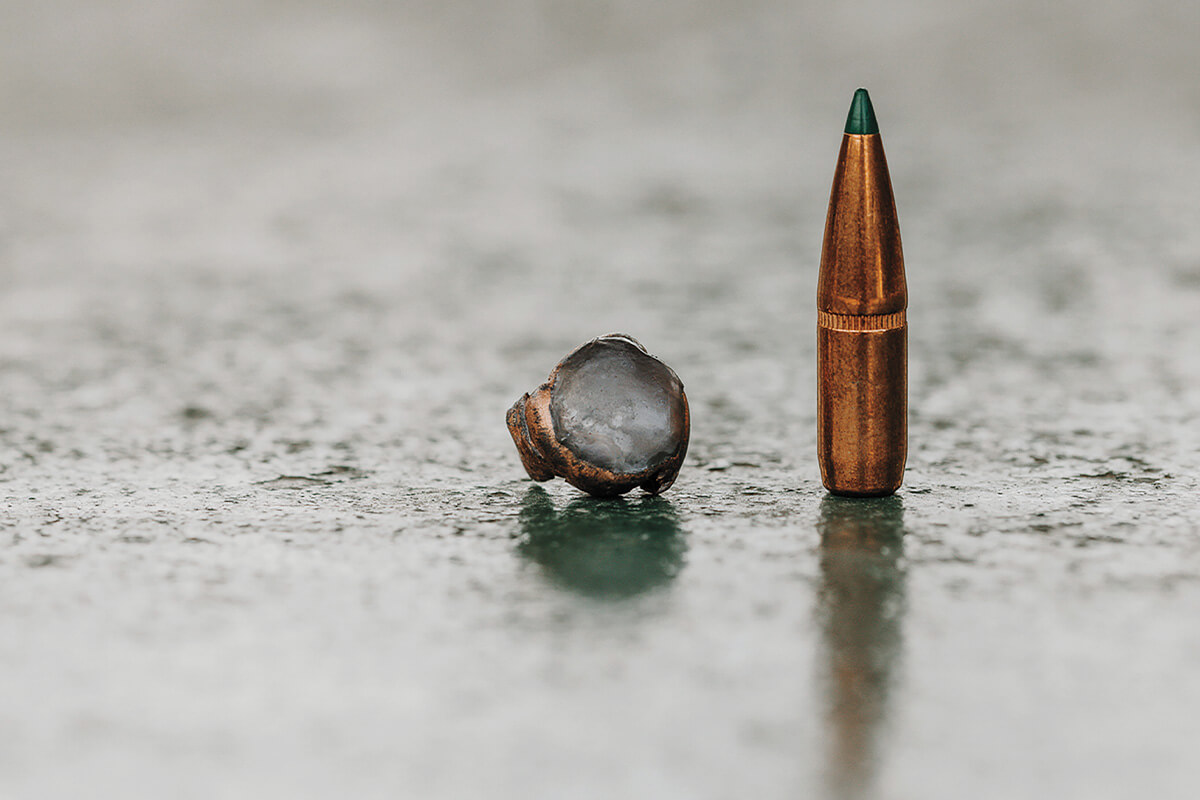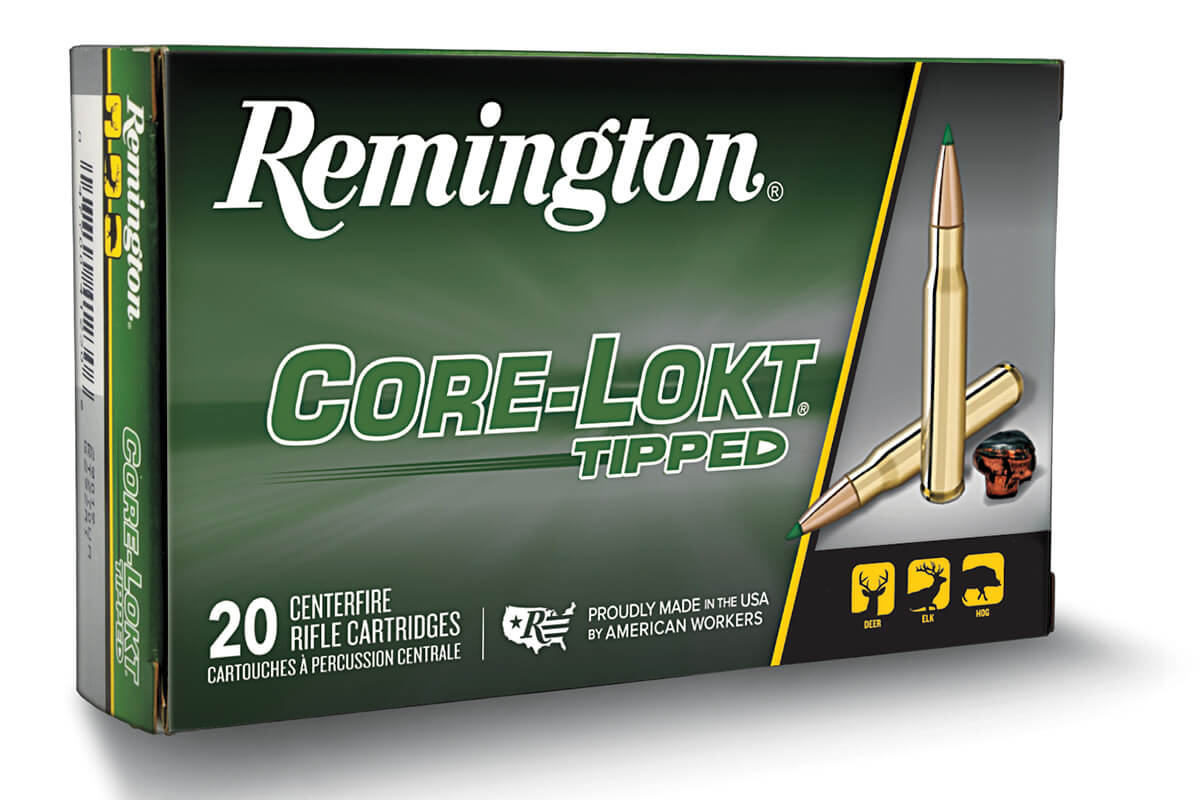
Remington produces the new Core-Lokt Tipped loads at its Lonoke, Ark., facility. (Photo by Adam Heggenstaller)
Although I don’t have an exact number, it wouldn’t be an exaggeration to claim that the first dozen or so deer I shot in my lifetime all fell to the Remington Core-Lokt. I started hunting when I was 12, and Core-Lokt loads were the only ammo I used for whitetails until well after I graduated from college. In fact, for all but four of those years, I used a single Core-Lokt load, the 150-grain .308 Win. Took a bear with it, too. (Not long ago I found an old empty box of .308 Core-Lokt that must have been from my high-school years. The price sticker was marked $8.99, which might buy six rounds today.)
I’m not alone in my connection to the Core-Lokt. No doubt some of you reading this have taken many more deer over many more years than I have with the bullet. “The Deadliest Mushroom in the Woods,” as the ad copy used to proclaim, is likely the most popular deer bullet of all time.

The Core-Lokt has had 83 years to build that following, but it would not have been such a success were it not a great bullet. When Remington introduced the Core-Lokt in 1939, it was one of the first bullets to mechanically lock the lead core to the copper jacket to prevent the two components from separating. Controlled-expansion bullets have become pretty complicated in their construction, but the Core-Lokt, simple by today’s standards, helped start the trend with a tapered jacket.
Fast forward through what is certainly hundreds of thousands—possibly millions—of deer killed with the Core-Lokt to 2020. Remington Outdoor Company had filed for bankruptcy for the second time, its numerous brands were being auctioned, and Vista Outdoor (parent company of Federal Ammunition) bought the Remington ammunition and accessories businesses that October. Over the next six months, Vista, including Remington Ammunition President Jason Vanderbrink, oversaw the retooling and reopening of the 750,000-square-foot factory in Lonoke, Ark., that has produced Remington ammo since 1969. Cranking out Core-Lokt loads was a primary focus, of course, but the new Big Green had further plans for its flagship bullet.
Last fall Remington introduced Core-Lokt Tipped ammunition, loaded with a new bullet that adds a green polymer tip to the conventional Core-Lokt design. Until now the Core-Lokt has existed mainly as a pointed-soft-point bullet, the exceptions being a round-nose soft-point in some heavy-for-caliber and lever-action loads, and a hollow-point variation for the .30-30 Win. The polymer tip offers several advantages over these other Core-Lokt designs, particularly at extended distances.
Ballistic coefficient (BC) is a comparative measurement of a bullet’s ability to overcome air resistance during flight. A sleeker, pointier bullet has a higher BC than a blunt bullet, meaning it experiences less drag as it travels downrange. Less drag equals less deceleration, which in turn reduces bullet drop and drift in wind over a given range. A Core-Lokt Tipped bullet has a higher BC than a Core-Lokt pointed-soft-point bullet of the same weight and caliber because of the sharp tip. For example, the 165-grain, .30-caliber Core-Lokt Tipped bullet’s BC is .447, while the BC of its Core-Lokt pointed-soft-point counterpart is .339.

The advantages of the Core-Lokt Tipped bullet’s higher BC are apparent when you compare exterior ballistics. I’ll use Remington’s factory data for both loads here to keep things even. The Tipped bullet starts out of the muzzle a bit faster—2,820 fps compared to 2,800 fps—and at 500 yards it’s moving more than 260 fps faster than the standard Core-Lokt. At that range it retains nearly 340 ft.-lbs. more energy. With a 200-yard zero, the Tipped drops 8 inches less than its predecessor at 500 yards, and in a 10-mph crosswind, it drifts 9 inches less at that range. These differences are the size of a deer’s vital zone, and so it’s clear that the Tipped permits more margin for error on the part of the shooter. (See the table below for comparisons between other popular loads.)
Another benefit of the polymer tip is consistency. There is less variation in its shape than what is found with the pointed-soft-point bullet’s lead tip. In addition, polymer doesn’t deform as easily as lead, keeping the meplat—or the front of the tip—from becoming marred and mangled during loading, chambering and accidental drops on rocky ground. Consistency from one bullet tip to the next promotes accuracy. The Core-Lokt Tipped also has a center of gravity that’s a bit farther back than that of the other Core-Lokt bullets, because the polymer tip isn’t as heavy as lead. This, too, aids in accurate bullet flight.
Finally, the polymer tip helps initiate expansion. While in my experience the standard Core-Lokt has never had any trouble expanding, I also don’t recall ever shooting a deer with it beyond about 150 yards. As velocity drops at extended ranges, bullets don’t deform as easily. The polymer tip, and the air pocket behind it, force open the nose of the bullet on impact to address this.
I tested the 150-grain .30-06 Sprg. Core-Lokt Tipped load through a Benelli Lupo that regularly produces sub-MOA groups. It did the same with the Tipped load, resulting in five, three-shot groups that averaged .94 inch. One of those groups was sub-half-MOA, something I can’t say I’ve experienced with Core-Lokt pointed-soft-point loads.

Last fall, I took the combo to Kansas for whitetails, and while I had an opportunity to shoot a heavy-racked buck at 500-plus yards across an open field, there was no reason to send it. The deer was coming straight toward the blind in which I was sitting. When he started to angle across the front, I shot him at less than 50 yards. The bullet hit the deer high in the shoulder—hey, I was excited after watching him approach all that way—and the buck instantly fell to the ground. He never made it back up, as the bullet had smashed through the tops of both shoulders and caught the bottom edge of the spine. The Core-Lokt Tipped passed through the deer even after that extreme impact and proved every bit as devastating as its forebear.
Remington has no plans to replace the Core-Lokt with the Core-Lokt Tipped; the company is just offering hunters another option built on a strong reputation in the deer woods. Thirteen Core-Lokt Tipped loads range from 95-grain .243 Win. to 180-grain .300 Win. Mag. (Notably, they include a 140-grain .280 Rem. load.)
There is no question that today’s factory rifles are much more accurate than those from 80 years ago when the Core-Lokt had just come on the scene. Optics are better, too, and hunters have a deeper understanding of ballistics. Considering the bullet’s history, it only seems right that the Core-Lokt Tipped should be part of this progression.

Remington Core-Lokt Tipped Specifications
- Caliber: .30-06 Sprg. (tested)
- Bullet Weight: 150 grs.
- Muzzle Velocity: 2,930 fps
- Ballistic Coefficient: .415
- MSRP: $49.99 per 20 rounds
- Info: remington.com









